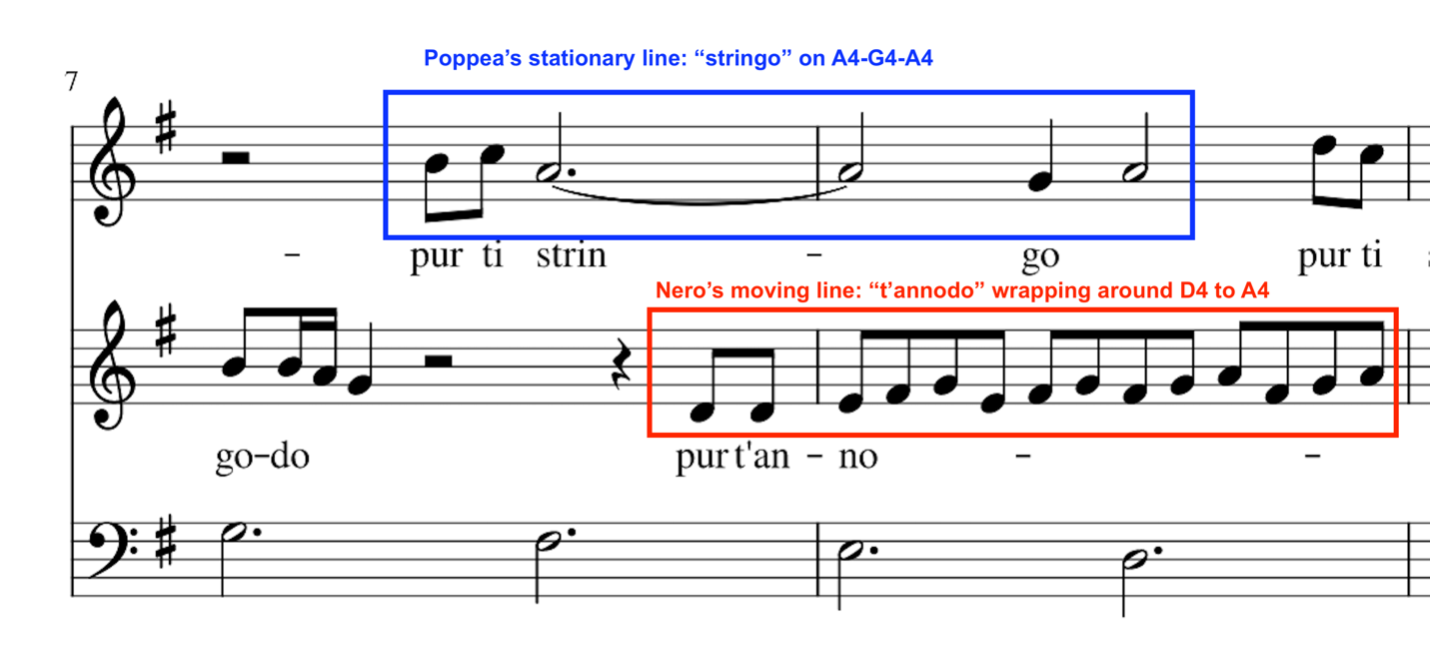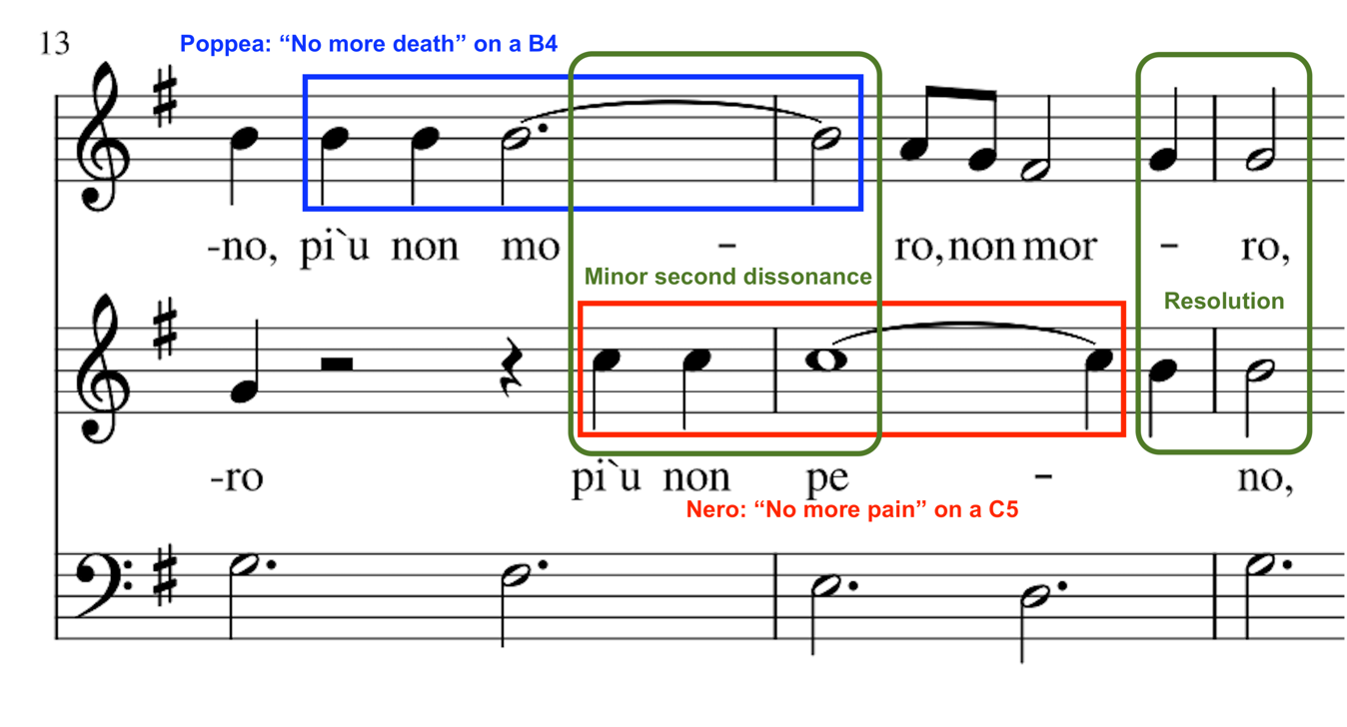Death, Sex, and the Semitone — Supplemental Material
Supplemental material for Death, Sex, and the Semitone in Monteverdi’s “Pur ti miro, pur ti godo”
[1] It is widely accepted that both the music and the libretto for this opera had multiple authors and that this duet may have been composed by one of Monteverdi’s students. This was not uncommon practice in the Renaissance, as “masters” often involved students in the production of pieces.
[2] The real-life Nero is reported to have kicked the real-life Poppea and their unborn child to death not long after their marriage. He went on to marry a few more people, including one teenage boy named Sporus, who may have been a trans woman. Sporus became Empress of Rome but sadly, committed suicide shortly after ascending the throne (Milne, 2020). Being married to Nero was apparently just that bad.
[3] There is an existing version of this piece where Nerone’s part is transposed down an octave for tenor voice. This turns the semitones into sevenths but, as will be shown later, this changes everything.
Figure 1: word painting on “pur t’annodo” – I enchain you
Figure 2: Spectral image of the beginning of recording 2, Poppea’s “pur ti stringo” over Nerone’s “pur t’annodo”. The annotation indicates where Poppea holds the tone straight and then allows vibrato into the sound.
Figure 3: Poppea enters on a B4, followed shortly by Nero’s entrance, a minor second above her, on a C5. This creates musical and sensory dissonance.
Figure 4: Simplified illustration of Sensory Dissonance, showing overlapping regions on the Basilar Membrane which vibrate in response to frequencies a semitone apart.
Recording 3: Les Arts Florissants performing “Pur ti miro, pur ti godo,” with Sonya Yoncheva, Poppea; Kate Lindsey, Nerone; William Christie, conductor; Jan Lauwers, stage director and choreography




